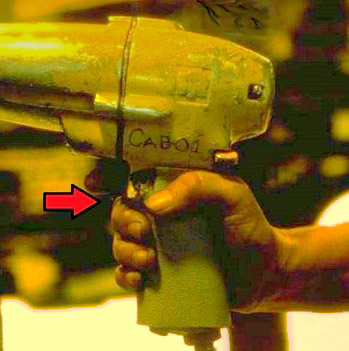 |
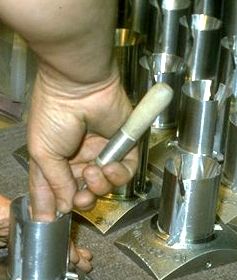 |
| Too large | Non-functional |
Principles affected
Related pages
Hand tools
Background
The primary interface (and often the only interface) between human and a tool is the grip. Common problems, whether the tool is powered or manual, include:
- Wrong size of the grip
- Too slippery for the task
- Hard edges or protrusions
- Inappropriate for the task
Objectives
Achieve the basic principles as appropriate to the task, especially:
- Keep the wrist in optimal position
- Minimize grasping force, and
- Eliminate pressure points
Note: The primary focus of this information for workplace personnel to improve ability to select and adapt tools as well as fabricate simple homemade tools. Tool designers and manufacturers may find this overview helpful, but generally need more detailed guidelines for the specific tool and application.
Issues and Options
Diameter
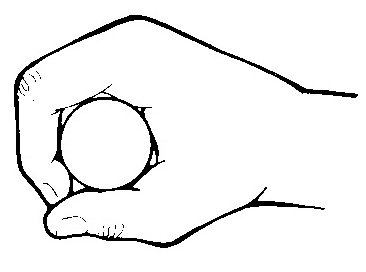 |
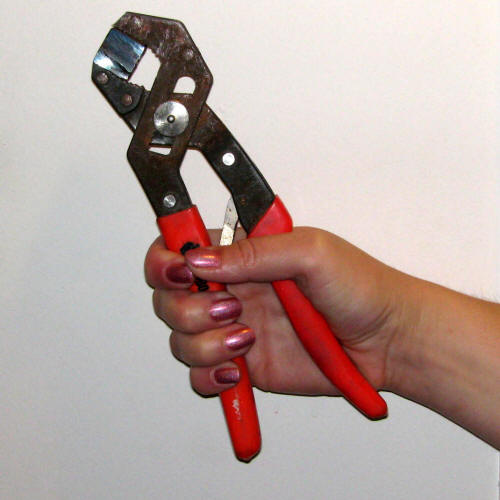 |
| Maximum strength | RoboGrip |
For maximum strength, the diameter of a grip is roughly the size that enables you to overlap your thumb and finger slightly. The RoboGrip pliars is effective because its mechanism provides this diameter regardless of the size of the object being held.
 |
 |
| Too large | Too small |
Grips that are either larger or smaller than this diameter require more exertion to accomplish the same task. Employees commonly add tape to handles to increase the size (as well as to increase friction and eliminate pressure points — see below).
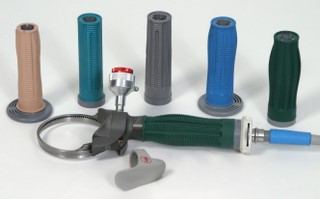 |
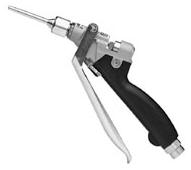 |
| Interchangable grip diameters | Adjustable grip size |
Some tools are specially designed to permit use of different-sized handles. The Bettcher IndustriesWhizard® knife above left has modular, interchangeable handles. The Graco Flo-gun incorporates a full-hand trigger that can be set at different distances from the main grip, thus providing adjustment to the handle size.
Precision vs. Power
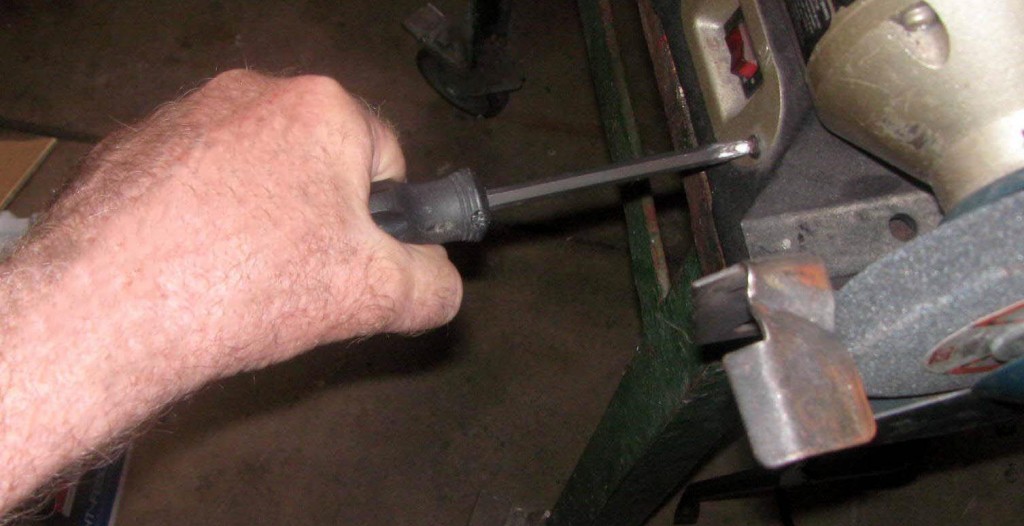 |
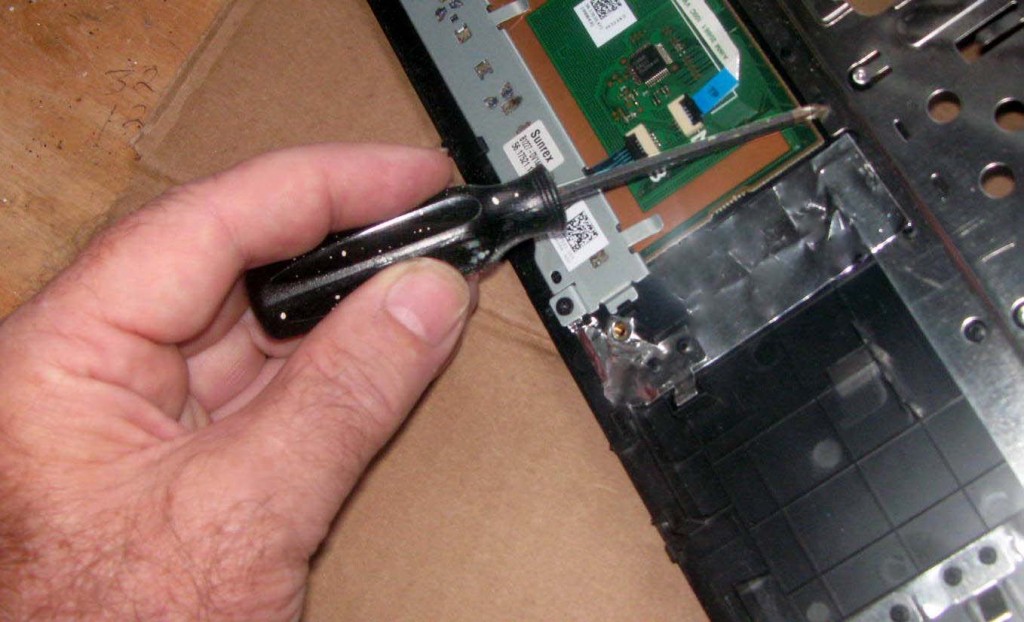 |
| Power grip | Precision grip |
Note that the above general rule about thumb and fingertip overlap applies to strength. However,dexterity is a different matter. Smaller diameters are usually better when dexterity is required. It is common to refer to a “power grip” vs. a “precision grip” to differentiate the two applications.
Length
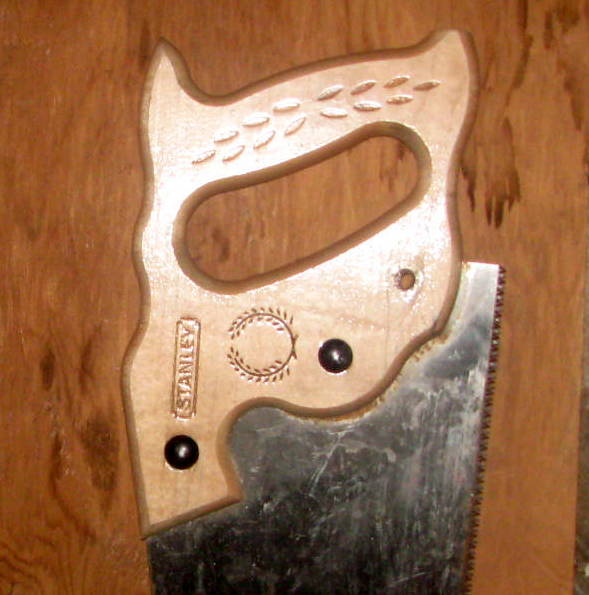 |
| Saw handle shows length and clearance |
The length of a grip is fairly intuitive and — in contrast to the diameter — not usually a problem. Normally, the length should be slightly larger than a large hand. Clearances should likewise be larger than the largest hand (usually with provision for gloves).
Note that in this context a “grip” is intended to mean the location for the hand, not necessarily the full “handle,” which can vary in length depending upon the tool and task.
Shape
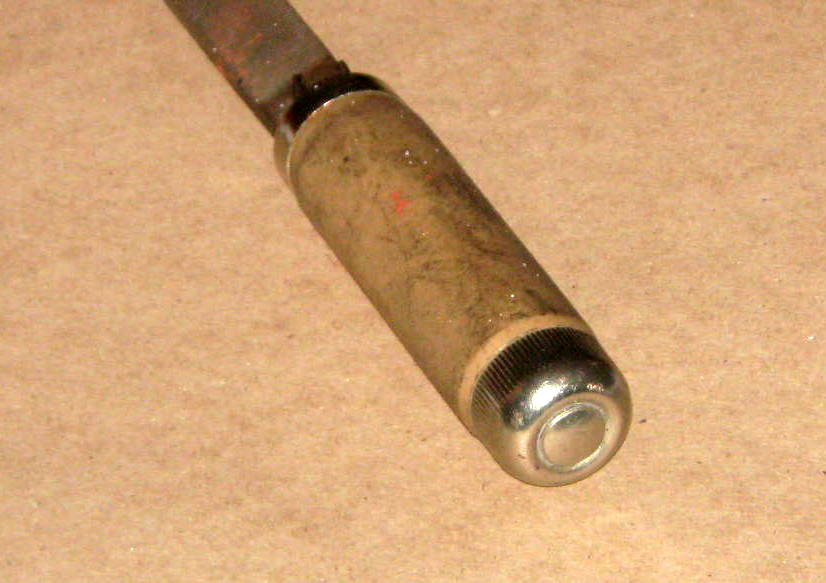 |
| Cylindrical |
The most universal generic rule is to use a cylindrical shape for grips. For specific applications, more detailed information on shapes may be known, but it can be difficult to generalize because of the nature of the task. For example, the shapes of knife grips in the meatpacking industry have been studied, but the extent to which the conclusions apply elsewhere are unclear.
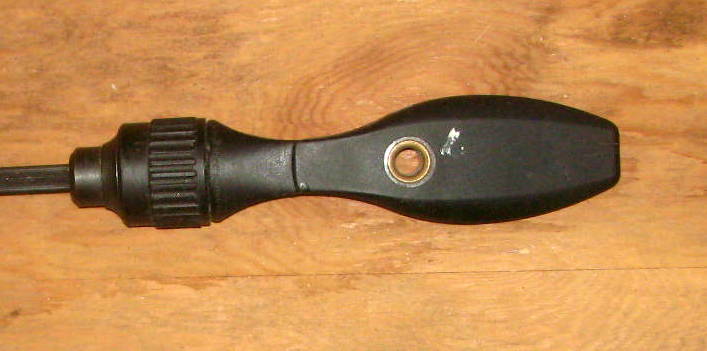 |
| Contoured for palm |
Some grip designs appear to work better if the diameter is widened in the center to accommodate the palm. Usually, the contours are symmetrical to fit both left and right handers and both “right-side up” and “upside down” holding positions.
| Need photo |
| May not fit all hands |
Some hand tools are overly designed in an effort to fit the hand more precisely. While an admirable objective, care should be taken, for several reasons:
- Grips designed for right-handed people may not fit left-handers.
- Tools are often not held the way designers intend, e.g. “upside down.”
- The size of hands of users may vary, so that a good fit for a large hand may worsen the fit for a small hand.
Friction surface
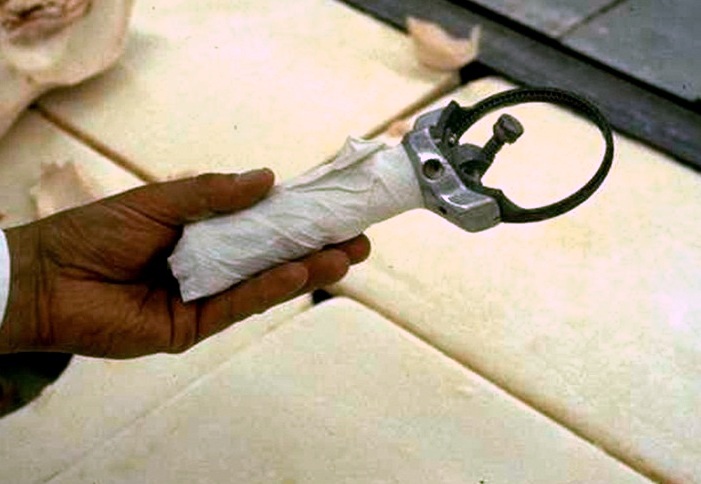 |
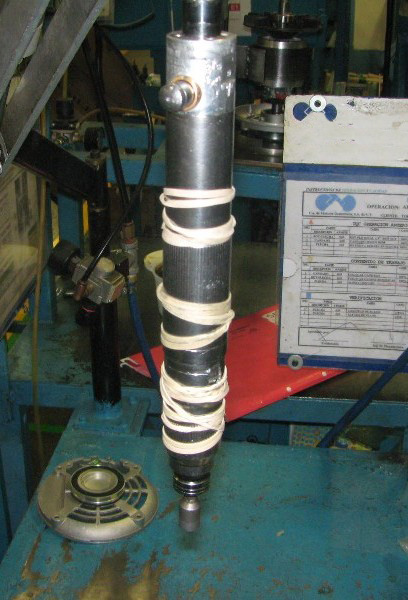 |
| Paper towel wrapped on grip | Rubber bands on inline tool |
Slippery grips can often be improved by adding a friction wrap. Employees often use materials at hand to reduce slick surfaces. These quick fixes can be adequate, but it is better to consider them as signs of problems that need more substantial adaptations.
 |
 |
| Commercially available friction grip | Dental pick with wrap |
Some manufacturers provide friction wraps designed to fit their tools. Dental tools provide another example of friction grips that are designed for specific products.
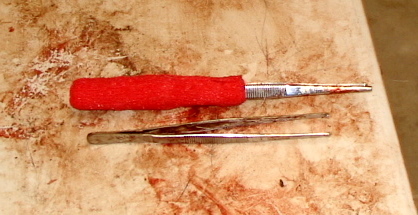 |
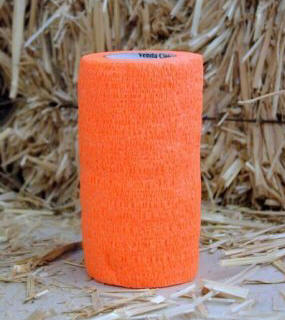 |
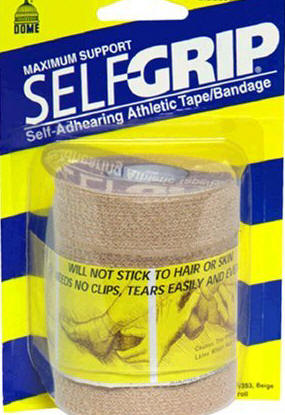 |
| “Vet wrap” on slippery tweezers (with and without) | Roll of colored “vet wrap” | Self-adhering bandage |
A quick fix option for friction wrap is self-adhering bandages available in drugstores. The bandages are sticky and soft, and thus serve to increase both friction (and diameter for small tools). Equivalent material is also available for animals and have the fortuitous advantage of being brightly colored. Often referred to as “vet wrap,” these bandages are available in pet stores and farm supply outlets.
See More examples of friction grips.
Collars
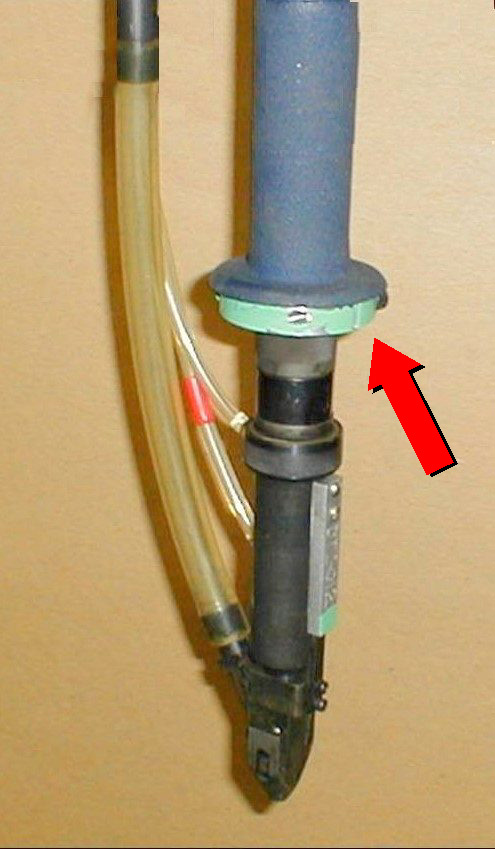 |
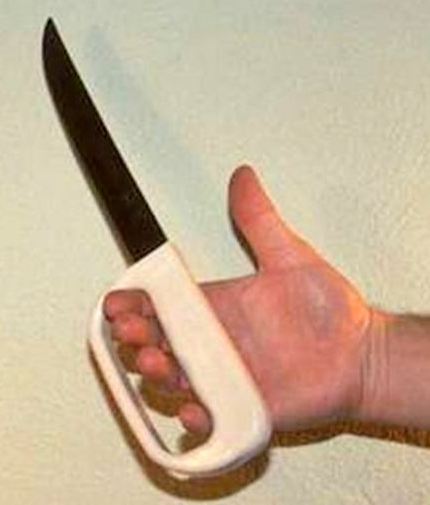 |
| Collar (arrow) | Guard on knife |
A “collar” is an excellent techique for reducing hand exertion on inline tools. A collar is essentially any rigid block on the grip that provides something to push against thereby allowing a more relaxed hand. (With pistol grip tools, the pistol grip itself provides this function). Collars are commercially available for inline fastening tools, but can also be fabricated in-house, as is the case in the photo above left.
Certain types of guards on knives used in meatpacking plants provide a different example of the same effect. These guards serve multiple purposes, but in this context, provide a something rigid for the top of the hand to press against when pushing the knife forward. (See also: Meat and poultry industry knives: A case example of the importance of friction grips.)
Grip angle
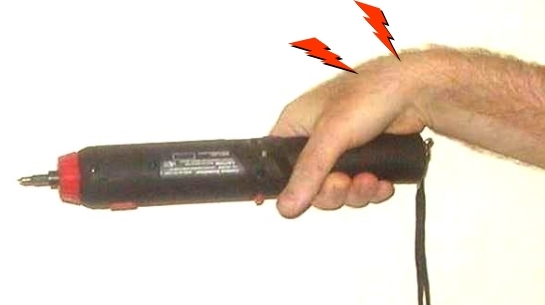 |
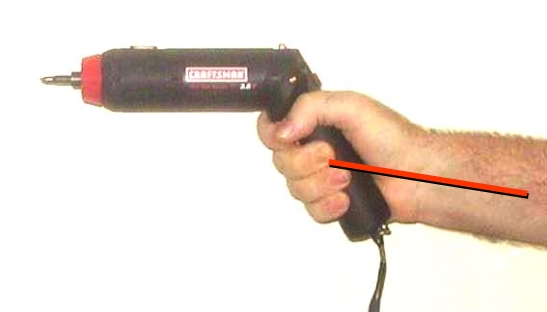 |
| Bent wrist | Neutral wrist |
The angle of the grip is a key consideration for hand tools, whether manual or powered. The primary concern is for frequent or continuous tasks, but the grip angle can be important as well for infrequent tasks that require strength or accuracy. (Note hinged grip; see comment below.)
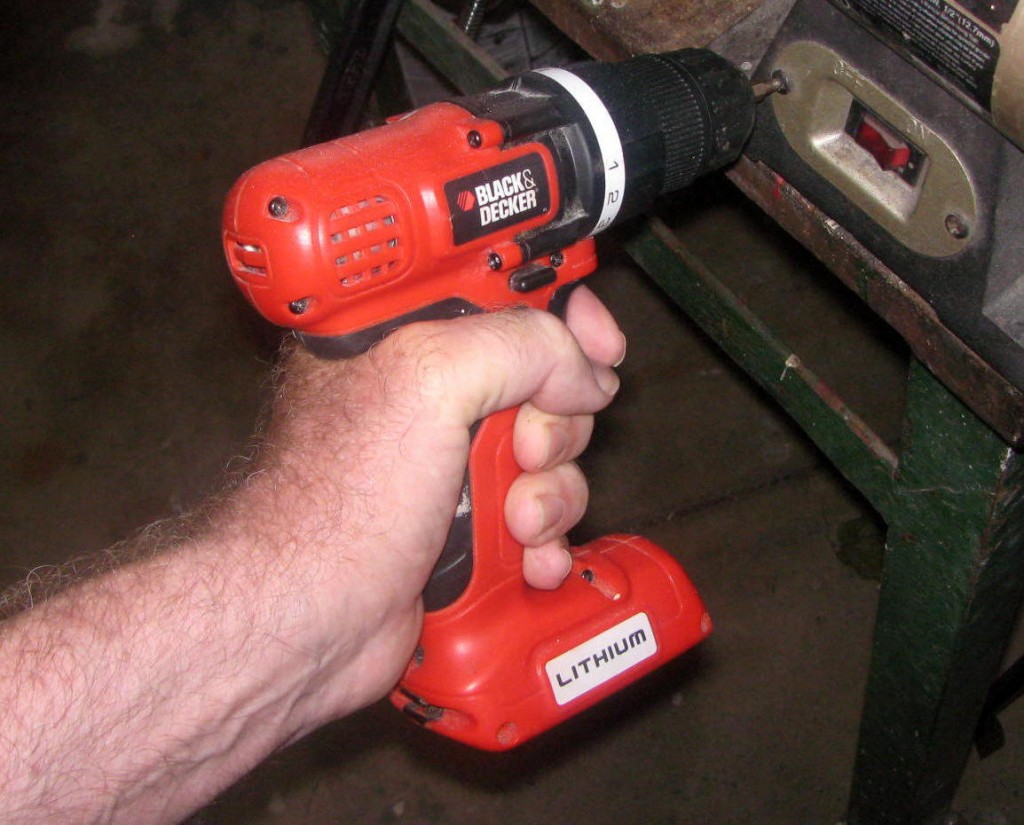 |
 |
| Pistol grip | “In-line” grip |
Often, the choice is between a tool with a pistol grip and one that is “in-line.” The selection is based on the position of the wrist. Pistol grips are normally better for horizontal access and in-line for vertical, but the point is to use a set up that puts the wrist in the optimal position.
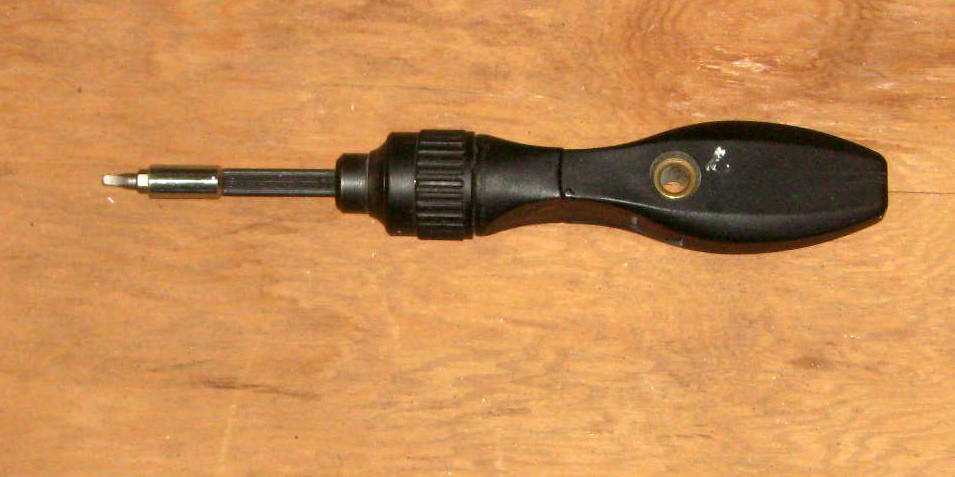 |
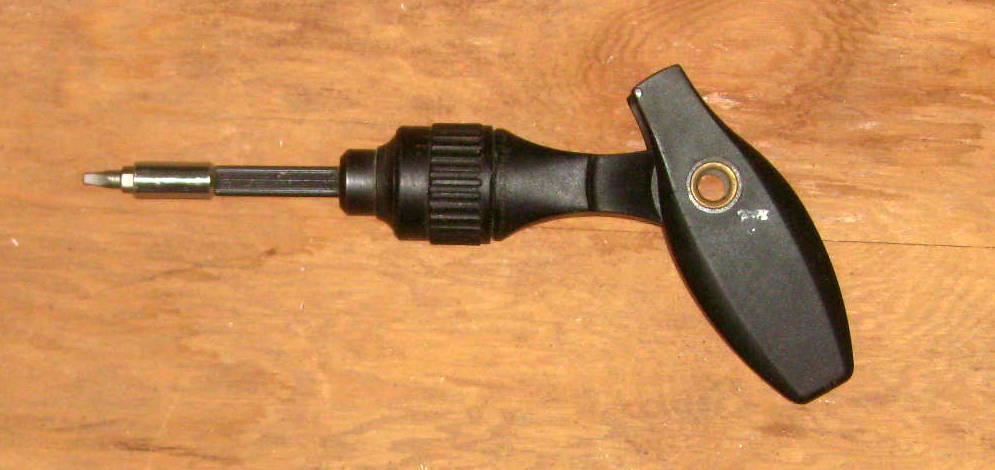 |
| Hinged grip | |
An increasing number of tools are designed with hinged grips, which allows the tool to be used in a variety of positions. Note that the above example is a screwdriver and that the pistol grip here also provides leverage in addition to keeping the wrist straight in various working positions.
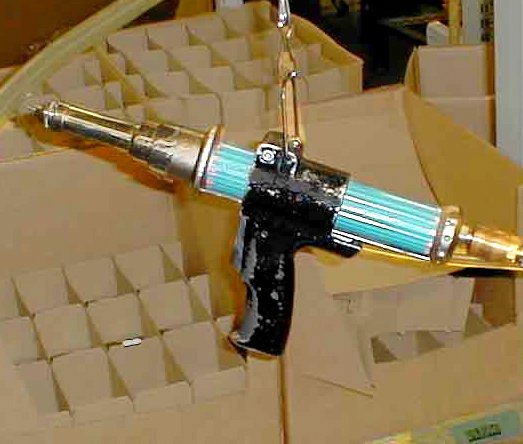 |
| Detachable pistol grip |
Detachable grips are also available to quickly convert in-line tools to pistol grips and vice versa.
Orientation of the tool
 |
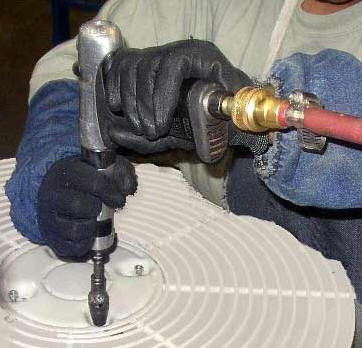 |
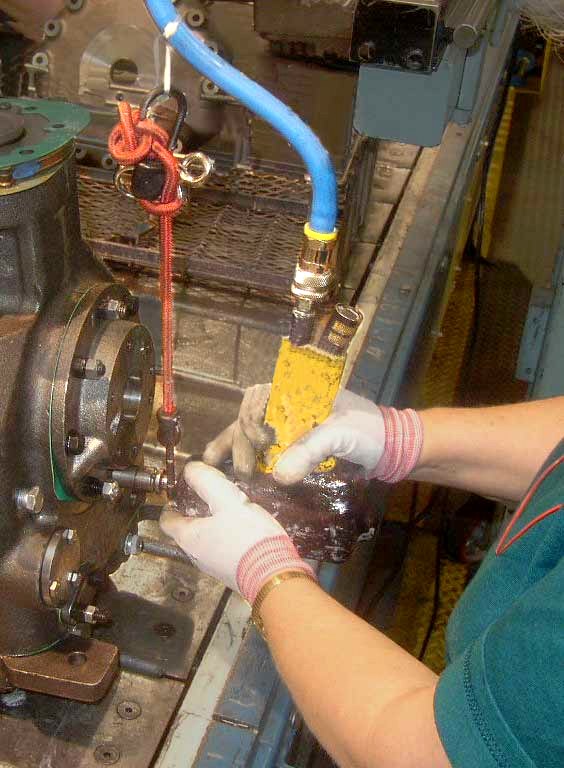 |
| Problem: Bent wrist, extended elbow | OK: Sideways | OK: Upside down |
It can be acceptable to use tools in various orientations. However, it is important to hold the tool in a way that keeps the wrists and arms in good working positions, i.e, wrists straight and elbows at the sides of the body.
Pressure points
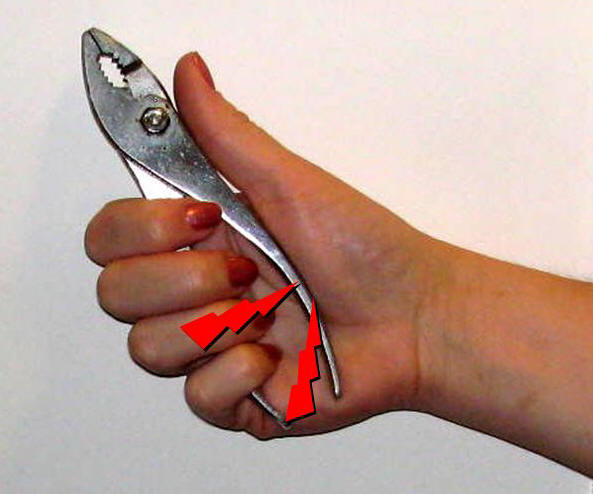 |
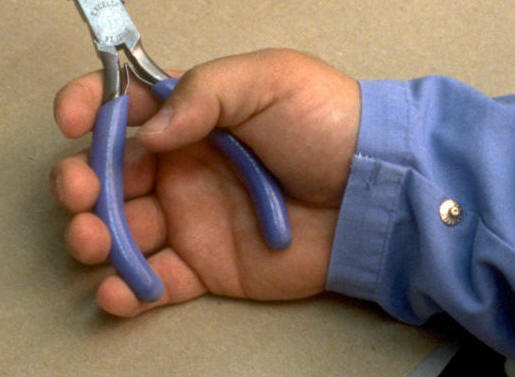 |
| Before | After |
Almost everyone has squeezed hard on a pliars and felt pain from contact between the palm and the hard metal. This is a “pressure point” or “contact stress.” The general rules for prevention are to:
- Round out any edges and protrusions.
- Add cushioning.
In particular, cushioning can be added in the workplace, using any number of approaches to wrapping or padding, such as those mentioned above for increasing grip friction.
Quantitative guidelines
The following provide rough numerical guidance:
- Diameter: 1.25 – 2-inch
- Length: >4.5-inch length
- Clearance: 2‑inch
